Advantages and Disadvantages of Aluminum Eyeglass Frames
Aluminum eyeglass frames offer exceptional lightweight comfort and a sleek, modern aesthetic through a unique coloring process called anodizing. However, this comes at a trade-off. They are less resistant to major impacts and harder for opticians to adjust when compared to materials like titanium or steel. The choice depends on your design priorities.
What Are Aluminum Eyeglass Frames?
To make a smart choice, you first need to understand what aluminum eyewear truly is. It’s far more than just a generic “metal” frame; it’s an engineered material with very specific properties that directly impact the wearer’s experience and your product’s final look.
It’s More Than Just Lightweight
Aluminum’s main claim to fame is its low density. This means it weighs about one-third as much as steel, a fact that has a huge impact on comfort. Think of it like the difference between wearing a heavy winter coat and a light spring jacket—this reduced weight eliminates the pressure points and fatigue that make customers take their glasses off.
It’s Always an Alloy
Pure aluminum is actually too soft for a durable pair of glasses. To achieve the necessary strength, it’s always mixed with other elements like magnesium and silicon, creating an aluminum alloy. This process is what gives the frame its structural integrity, making it several times harder than pure aluminum while keeping its signature lightweight feel.
Simple Analogy: The same high-performance aluminum used in aerospace engineering is adapted for premium eyewear. This isn’t a marketing gimmick; it reflects a shared need for materials that are simultaneously strong, light, and resistant to corrosion, whether for a jet fuselage or a pair of glasses on your customer’s face.
It’s Abundant and Recyclable
Aluminum is the world’s most abundant nonferrous metal, which helps ensure a stable supply chain for manufacturing. This also makes it a strong choice for sustainability, as aluminum is one of the most recycled—and recyclable—materials in the world, a key selling point for environmentally conscious brands.
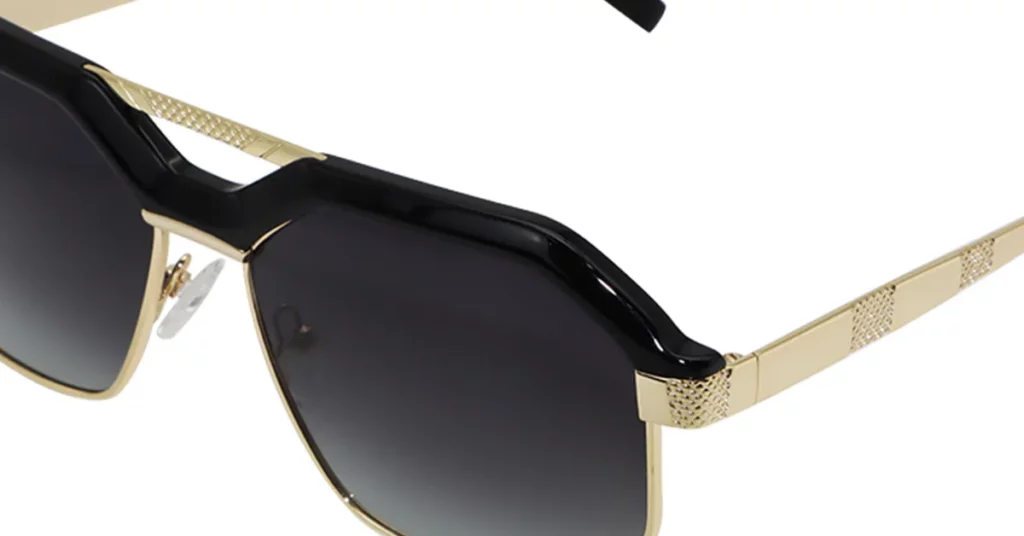
Why Brand Managers Choose Aluminum
For the right brand, aluminum isn’t just another option; it’s a strategic choice that communicates a specific message about style, technology, and comfort. Understanding its core benefits helps you see where it fits in the market.
Unmatched Lightweight Comfort
The number one reason to choose aluminum is all-day comfort. This isn’t a small detail; it’s a major factor in customer satisfaction. The frame’s lack of weight means it won’t constantly slide down the nose or leave those deep, red indentations from the nose pads that heavier frames cause after a few hours of wear.
A Sleek, Modern Aesthetic
Aluminum frames deliver a clean, minimalist, and premium look. The material naturally lends itself to the sharp lines and sophisticated feel that define contemporary and tech-focused design. If your brand story is about innovation and modern style, aluminum is a perfect material to help tell that story.
Unique Color via Anodizing
This is a key differentiator. Instead of being painted, aluminum is colored through a process called anodizing, where the color becomes an integral part of the metal itself. This means the color will never chip, flake, or peel like a surface coating can. This opens up a world of vibrant, metallic finishes that are both beautiful and incredibly durable.
Common Mistake: Many new designers think of aluminum as just a “cheaper titanium.” This misses the point. While titanium offers superior flexibility, aluminum provides its own unique advantages in color possibilities and a distinct, modern aesthetic that titanium often cannot match. You choose it for its unique look, not just its price.
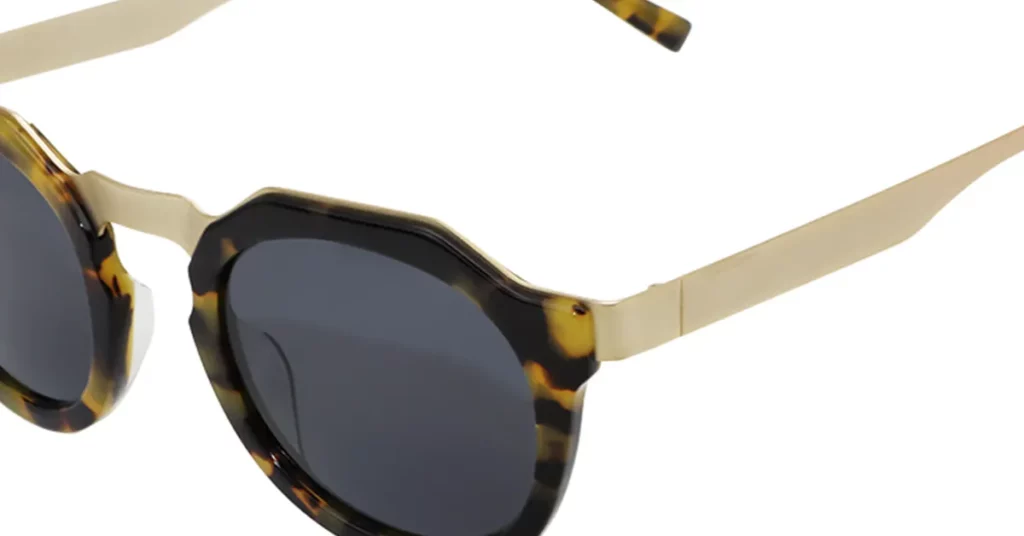
Aluminum’s Advantages and Disadvantages
Every material is a set of trade-offs. Your job as a designer or brand manager is to pick the right set of trade-offs for your target customer. Here’s a clear breakdown of aluminum’s strengths and weaknesses.
Advantage: High Strength-to-Weight Ratio
Aluminum provides a fantastic feeling of durability without the heft. This means that when properly alloyed, it can deliver the structural integrity your customers expect from a metal frame but at a fraction of the weight of steel. It feels both solid and surprisingly light at the same time.
Advantage: Excellent Corrosion Resistance
Aluminum naturally protects itself from the elements. When exposed to air, the material develops a thin, tough, and invisible layer of aluminum oxide on its surface. This natural barrier prevents rust and corrosion, making aluminum frames a reliable choice for people in humid climates or for those with active lifestyles.
Disadvantage: Lower Impact Durability
Here is aluminum’s primary weakness. While perfectly strong for daily use, it does not handle significant impacts as well as titanium or steel. If a user is particularly rough on their eyewear or works in an active environment, a hard drop or blow is more likely to permanently bend or even break an aluminum frame.
Critical Warning: For this reason, avoid specifying aluminum for collections aimed at children or for high-performance sports eyewear where impacts are common.
Disadvantage: Limited Adjustability
This is a critical point for opticians and customer satisfaction. Aluminum is quite rigid and has low ductility, which means it can snap if bent back and forth. Opticians find it very difficult to make fitting adjustments to the frame front, which can lead to fit issues for customers and a higher risk of breakage during dispensing.
Pro Tip: To work around this, your design should build in the adjustability. Always use adjustable silicone nose pads and high-quality spring hinges to give the wearer flexibility where the material itself cannot.
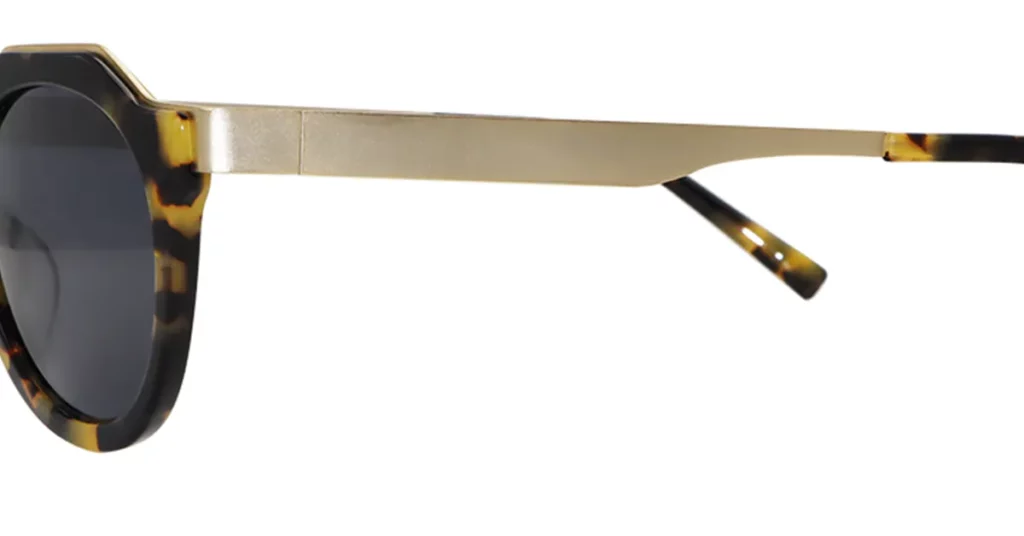
Aluminum vs. Other Frame Materials
To truly understand aluminum’s place, you have to see how it stacks up against the other major players in the eyewear market. This head-to-head comparison will help you position it correctly.
| Feature | Aluminum | Titanium | Stainless Steel | Acetate |
| Weight | Ultra-lightweight | Lightweight | Moderate | Moderate-to-Heavy |
| Flexibility | Rigid | High (Shape Memory) | Moderate | High (with heat) |
| Durability | Good (for daily use) | Excellent (impact resistant) | Very Good | Good |
| Adjustability | Very Poor | Good | Good | Excellent |
| Coloring | Excellent (Anodizing) | Limited (Plating/PVD) | Limited (Plating/PVD) | Unlimited (Patterns) |
| Hypoallergenic | Excellent | Excellent (100% pure) | Good | Excellent |
| Cost | Moderate | Premium | Budget-Friendly | Varies Widely |
The Bottom Line: The table shows there is no single “best” material. Choose aluminum when your customer values modern aesthetics and the lightest possible weight over the ability to survive rough handling. Choose titanium for ultimate durability and flexibility. Choose acetate when you need endless color patterns and easy adjustability.
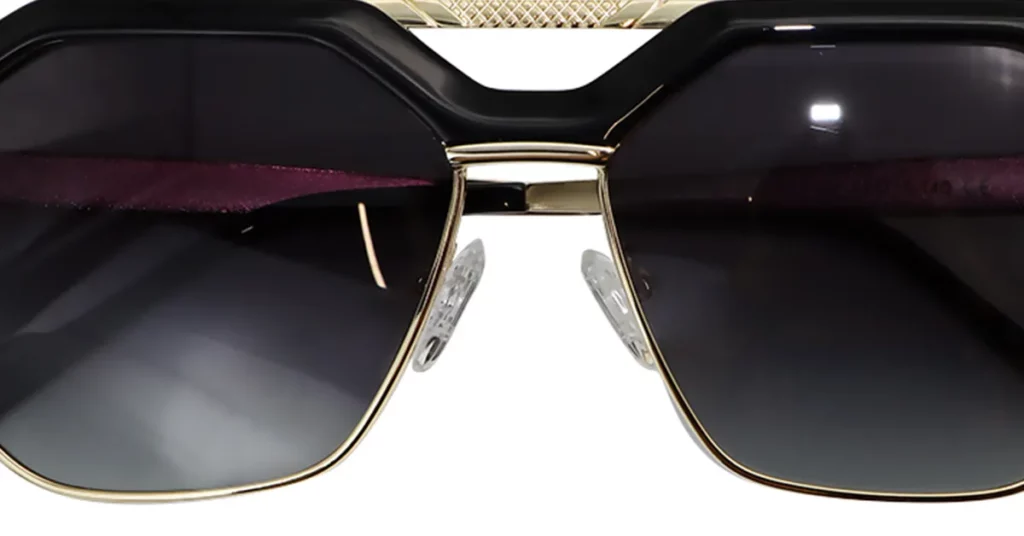
Understanding Aluminum Material Science
Not all aluminum is the same. The specific alloy and the finishing process used by your manufacturer will have a massive impact on the final quality, durability, and appearance of your frames.
The Importance of the Alloy
The performance of your frames is dictated by the specific aluminum alloy used. Pure aluminum is too soft, so it must be mixed with other elements to provide strength.
- The Workhorse (6000 Series): Most quality eyewear uses a 6000 series alloy, which blends aluminum with magnesium and silicon. This series offers a great balance of strength, corrosion resistance, and workability, making it an ideal choice for most premium eyewear applications.
- The High-Performance (7000 Series): For top-tier strength, some brands use a 7000 series alloy, which adds zinc. This creates an “aerospace-grade” material with strength comparable to some steels, but it comes with a higher cost and is harder to manufacture.
Best Practice: Always ask your manufacturing partner for a material specification sheet. This document confirms the exact alloy being used (e.g., 6061 vs. 7075) and ensures you get consistent quality across your entire production run.
The Secret of Anodizing
Anodizing is what gives aluminum its unique and durable color. It’s an electrochemical process that thickens the natural oxide layer on the metal’s surface. Color dyes are then absorbed into this porous layer, which is then sealed, locking the color in permanently. Because the color is in the metal, not on it, an anodized finish will not chip or peel like paint.
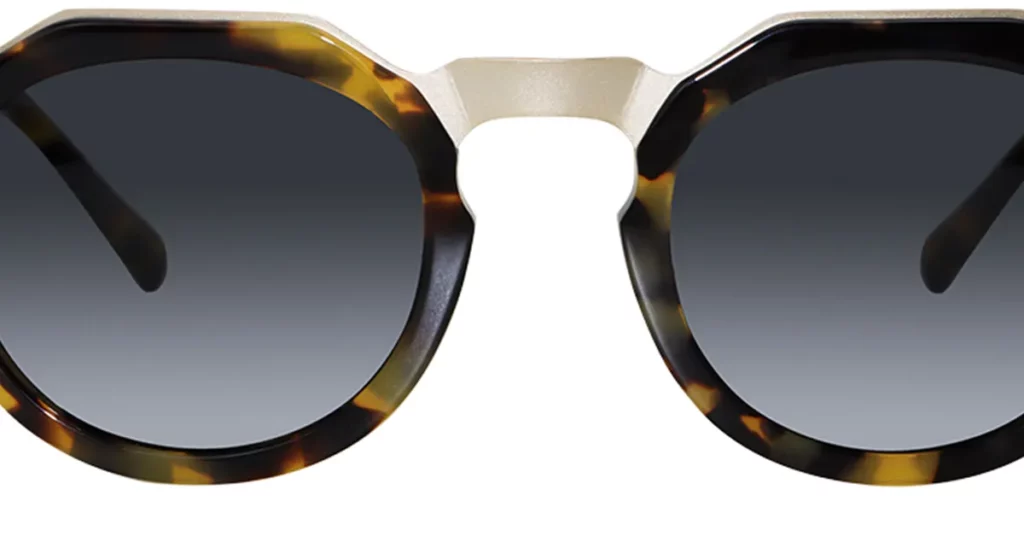
How Aluminum Frames Are Manufactured
Understanding how a frame is made helps you appreciate the details that separate a high-quality product from a cheap imitation. The process is one of precision from start to finish.
- Step 1: CNC Machining
- The Action: The process starts with a solid block (a “billet”) of high-grade aluminum alloy. A computer-controlled machine, or CNC machine, then carves the frame fronts and temples directly from this solid block.
- Why it Matters: This method creates incredibly precise and perfectly symmetrical parts. The quality of the CNC machine directly determines the final fit and finish of the frame.
- Step 2: Tumbling and Polishing
- The Action: The freshly machined parts are placed in a tumbler with small abrasive media to smooth all surfaces and remove any tiny tool marks left by the CNC machine. This is often followed by hand polishing.
- Why it Matters: This step is critical for the premium feel of the frame. A superior polishing process creates the deep luster and smooth surface that customers associate with luxury eyewear.
- Step 3: Anodizing
- The Action: The polished parts are submerged in an electrolyte bath to undergo the anodizing process, which applies the color and adds a hard, protective layer.
- Why it Matters: The quality control during this step dictates the richness and durability of the color. Inconsistent processes can lead to blotchy colors or a finish that wears down over time.
- Step 4: Final Assembly
- The Action: The finished parts are carefully assembled with high-quality hinges, temples, and nose pads.
- Why it Matters: The hardware is not an afterthought. Quality components ensure a smooth, reliable action and contribute significantly to the frame’s long-term performance and durability.
When to Choose (and Avoid) Aluminum
Knowing a material’s limits is just as important as knowing its strengths. Use this as a guide to prevent costly mistakes and unhappy customers.
The Ideal Use Case
Aluminum is the perfect choice for brands that are modern, minimalist, or tech-focused. Its sleek lines, clean finish, and high-tech manufacturing story align perfectly with a brand identity built on sophistication and innovation. It feels premium and looks professional, making it ideal for office wear or as a fashion statement.
When to Avoid Aluminum
There are specific situations where aluminum is the wrong choice. Avoid this material in the following scenarios:
- For Children’s Eyewear: Children need frames that can survive drops, tumbles, and rough handling. Aluminum’s limited flexibility makes it unsuitable for this demanding market.
- When Easy Adjustments are Key: If your brand promises a “perfect custom fit” adjusted by a local optician, aluminum is a poor choice. Its rigidity makes post-purchase adjustments extremely difficult.
- For Classic or Organic Brands: If your brand identity is built on traditional craftsmanship or natural warmth, aluminum’s cool, technical feel will clash. For these brands, acetate or wood is a much better fit.
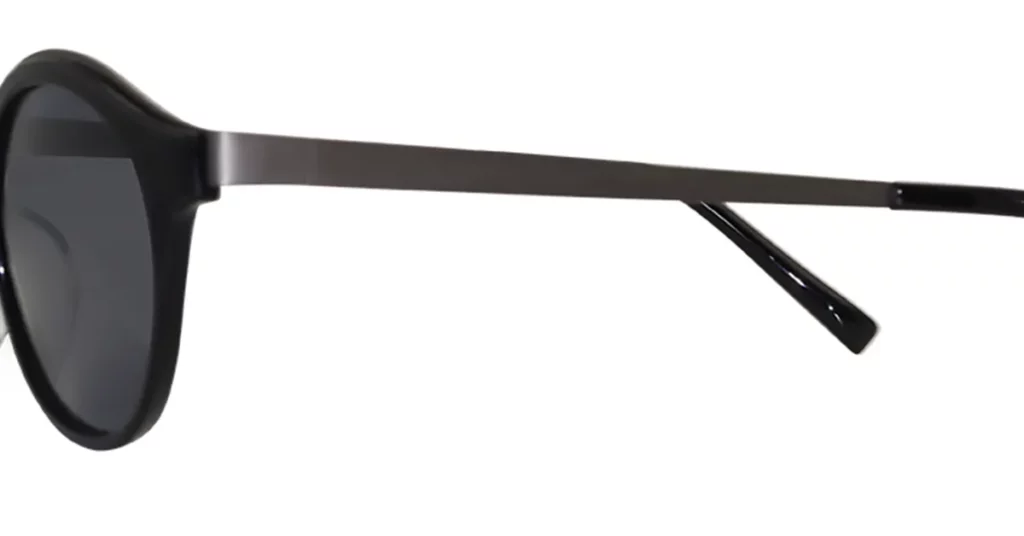
A Guide to Maintenance and Repair
You must set realistic expectations with your customers about how to care for their aluminum frames. This knowledge helps prevent damage and reduces warranty claims.
The Durability Question
For normal, daily wear, a well-made aluminum alloy frame is perfectly strong and reliable. Its strength-to-weight ratio is more than sufficient for the demands of typical use. The key weakness is its response to acute stress, like being sat on or dropped on a hard floor. It is more likely to bend or break from these accidents than titanium.
Remember This: The single best way to protect an aluminum frame is to store it in a hard protective case. This simple habit prevents the vast majority of issues by shielding the frame from accidental pressure and impacts.
The Reality of Repairs
Repairing aluminum is very difficult, and it’s important to be honest about this.
- Scratches: A deep scratch on an anodized finish is permanent. Because the color is part of the metal, you cannot buff or polish out a significant scratch without removing the color itself.
- Bends: Once an aluminum frame is bent out of shape, it’s very risky to try and bend it back. Its low ductility means the attempt is highly likely to cause a stress fracture, breaking the frame completely.
The Bottom Line: For any significant damage, the reality is that an aluminum frame typically requires a full replacement of the damaged part. Unlike other materials, it cannot be effectively welded or reshaped once compromised.
Conclusion
Aluminum is a strategic material choice that offers a specific trade-off: you get incredible lightweight comfort and a sleek, modern aesthetic in exchange for the top-tier durability and adjustability found in materials like titanium. For brands targeting a style-conscious customer who prioritizes design and all-day wearability, aluminum is a winning choice that delivers a truly premium feel.
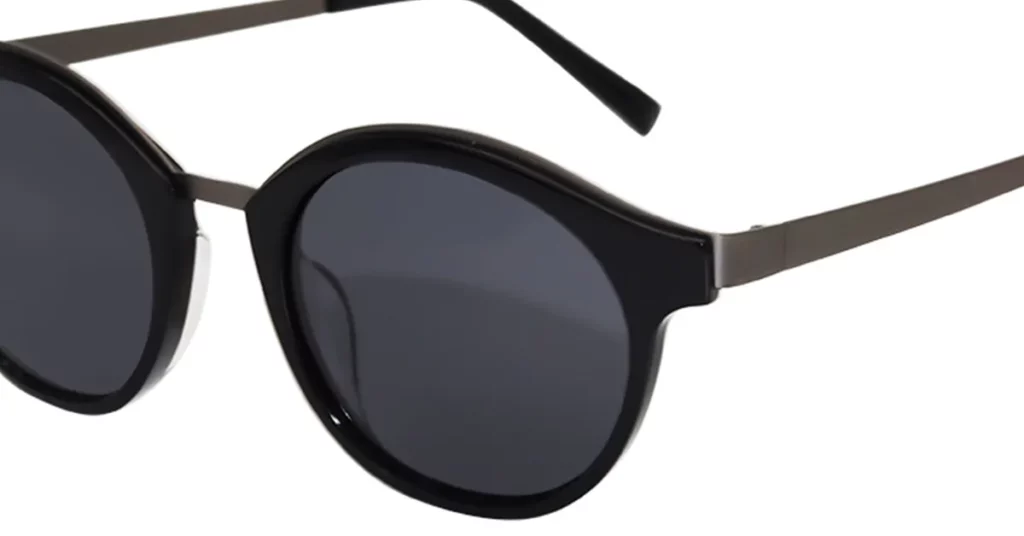
Frequently Asked Questions
1. Will aluminum frames turn my skin green?
No. High-quality, properly anodized aluminum is non-reactive and will not oxidize or stain your skin. This issue is typically caused by low-quality plated metals where the coating wears off, exposing a reactive base metal like nickel or copper.
2. Are aluminum frames a good choice for children?
Generally, no. Aluminum frames do not have the flexibility or impact resistance required to withstand the rough use of active children. Materials like flexible plastics or memory metals are much more suitable choices for kids’ eyewear.
3. Is a more expensive aluminum frame really better?
Yes. A higher price usually reflects a superior alloy (offering more strength), a more advanced and durable anodizing process, and higher-quality components like hinges and screws. These factors directly contribute to a better-looking and longer-lasting frame.
4. Can I get my aluminum frames adjusted if they don’t fit?
Only in very minor ways. An optician may be able to make tiny adjustments to the temples or nose pads, but the frame front itself is rigid and cannot be heated or bent into a new shape without a high risk of breaking it.
5. How do aluminum frames handle extreme heat or cold?
Aluminum has excellent thermal stability. Unlike some plastics that can become brittle in extreme cold or warp in high heat (like a car dashboard), aluminum frames maintain their shape and integrity across a very wide range of temperatures.